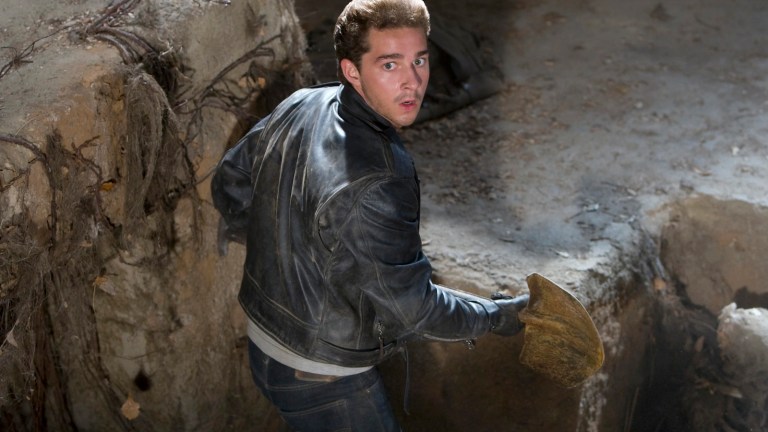Indiana Jones 5 Redeems Shia LaBeouf’s Despised Mutt Williams
Indiana Jones and the Dial of Destiny pairs Indiana Jones with a younger actor. So what happened to Mutt Williams after Indiana Jones and the Kingdom of the Crystal Skull?

This post contains spoilers for Indiana Jones and the Dial of Destiny.
Indiana Jones and the Dial of Destiny isn’t only the final adventure of Nazi puncher/archeologist/teacher Indiana Jones. It’s also a referendum on his last, last adventure, 2008’s Indiana Jones and the Kingdom of the Crystal Skull. Despite reuniting the original Indy creative team of director Steven Spielberg, writer/producer George Lucas, and star Harrison Ford, most consider Crystal Skull to be an embarrassing disaster. Haters have plenty of nits to pick at, too, including Indy’s refrigerator bomb escape, CGI monkeys, and space aliens. But more than a few would argue that worst part is Shia LaBeouf as Mutt Williams, son of Indy and his former great love, Marion Ravenwood (Karen Allen).
For a moment, it appeared that Spielberg and Lucas wanted Mutt to follow in his father’s footsteps. The movie even ended with a scene of Mutt reaching for Indy’s hat, only seconds away from putting it on when Indiana snatches it for himself. Now in Dial of Destiny, we know for certain that Mutt will never wear it.
Unsurprisingly, the new adventure teams 80-year-old Ford with a younger actor, who is now responsible for most of the movie’s derring-do. The surprising part is that this younger actor is Phoebe Waller-Bridge playing Helena Shaw, Indy’s previously unmentioned goddaughter, child of his previously unmentioned close friend and colleague Basil Shaw (Toby Jones). So what happened to Mutt?
Dial of Destiny director James Mangold and his team of co-writers—brothers Jez Butterworth and John-Henry Butterworth, alongside David Koepp—take their time dolling out Indy’s backstory. After an opening sequence with a digitally de-aged Ford in World War II, we cut to 1969 where Indiana wakes up in a New York City apartment in which he lives alone. It’s his last morning as a college professor, with the old archeologist planning to retire later that day. Also in his home we see unsigned divorce papers on Indy’s desk right before he decision to cover a picture of Marion on his fridge. So right off the bat, we know that Indy and Marion have ended badly, but we don’t know why.
That changes late in the movie after Jones and Helena realize that villain Voller (Mads Mikkelsen) wants the titular dial (real name: Antikythera, an ancient Greek invention of Archimedes) to travel in time. During a quiet moment between set pieces, Helena thus asks her godfather what he would do if he could go back in time.
Instead of reliving any of his previous adventures—looking for the Ark of the Covenant or the Holy Grail—Indy says that he would go back and talk to his son. All of the resentment and anger that Indy had been holding drops away as Ford chokes on his lines, emphasizing his vulnerability and regret. “I would tell him not to enlist,” he says. “I would tell him that he would die. And that his death would break his mother’s heart.”
At that moment, Mutt becomes more than the annoying punk in the misguided fourth Indiana Jones movie. Ford’s performance forces viewers to forget everything that annoyed many of them about LaBeouf and his greaser swag. Instead we see him only as a son, loved by his father, and mourned by both his parents.
This short scene radically changes Kingdom of the Crystal Skull from one of the more unsatisfying exploits of the legendary Indiana Jones to a look into the heart of the man under the fedora. It makes Indy human, and his final adventure a much more poignant affair.
